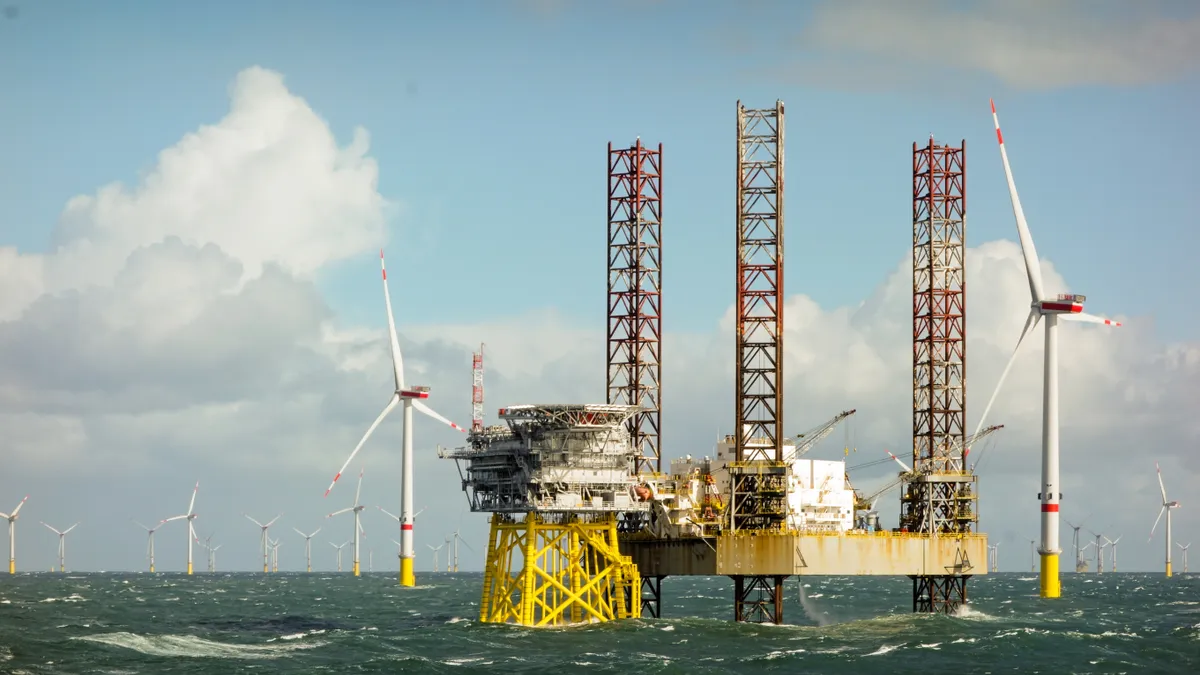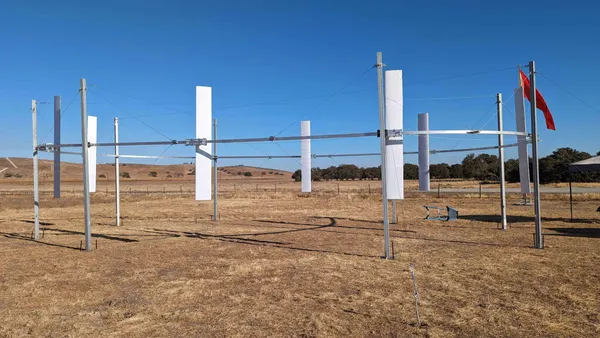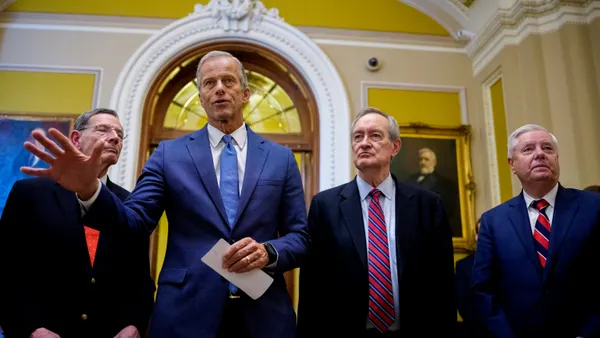Dive Brief:
- The global cost of developing offshore wind projects has risen significantly since 2021 thanks to higher interest rates, the war in Ukraine and other economic factors — but strong demand points to continued growth, DBRS Morningstar Vice President of Project Finance and Infrastructure Kevin Beicke said in an interview.
- The tax credits included in the Inflation Reduction Act, along with the policy drivers of state and federal offshore wind goals and ongoing technological advancements offset those difficulties enough to give developers confidence, he said.
- In addition, Beicke said that oil and gas companies have been increasingly entering the offshore wind market, and may be “less price-conscious” about projects than utility company developers due to countervailing carbon offset needs.
Dive Insight:
In a Wednesday commentary from Beicke and Arthi Sambasivan, DBRS’s managing director of project finance, infrastructure and sports, the two said that the global offshore wind industry’s “strong growth” in recent years is facing challenges from high inflation and supply chain disruptions that have led to “meaningful cost escalations.”
“Such large cost increases resulting from global macroeconomic shocks are difficult to forecast, especially so for offshore wind power projects, which could take nearly a decade to complete given the lengthy process for development, design, and construction,” they wrote.
In the U.S., where the offshore wind industry is more nascent than it is in Europe, there are additional investments that need to be made as developers begin to launch utility-scale projects — including new ports and offshore wind turbine installation vessels.
Dominion Energy, which constructed a 12-MW pilot project offshore Virginia and is developing a 2,640-MW project nearby, has invested $500 million in the construction of the first turbine installation vessel in the U.S. and plans to lease it to other developers once completed, Beicke said.
Project cost increases led to Avangrid last month reaching an agreement with three Massachusetts utilities to terminate power purchase agreements for its 1,223-MW proposed offshore wind farm Commonwealth Wind. The company plans to rebid the generation capacity in those PPAs under the state’s next solicitation.
However, the industry is being bolstered by federal tax credits, support from politicians who want to ensure state and federal clean energy goals are met, and the “ideal” offshore wind development conditions along the Atlantic coast, Beicke said.
Beicke said that cost pressures for U.S. offshore wind projects are also partially the result of higher prices for offshore wind leases, driven up by oil and gas companies increasingly bidding on such leases.
Initially, bidders in the U.S. were “local utility companies” who “paired with experienced European offshore wind developers,” he said. “In recent years, the oil and gas companies got involved so that they could offset their carbon footprint and invest in renewable energy, which looks better to ESG-minded investors.”
Though higher lease prices raise project costs, Beicke said it’s possible that oil and gas companies like Shell and BP might be “willing to take a lower return” on these projects as long as they’re able to offset their carbon emissions.
In addition, “bidders may have thought that with expected future technological improvements that they could reduce the cost of building these projects, and then would be able to get the returns that they're looking for,” Beicke said.
Cost-saving technological improvements include larger turbines and the ability to deploy them, which allows developers to install fewer total turbines. The larger a wind turbine, the more energy it can capture, the Department of Energy wrote in an August 2022 article. Taller turbines are able to reach heights where wind speeds are higher, while “larger rotor diameters allow wind turbines to sweep more area, capture more wind, and produce more electricity,” DOE said.
The department said that it is working to innovate past the challenges of transporting and installing large turbines with projects like the design of more slender and flexible blades, as well as turbine towers that can be produced on-site.
“Although the industry is facing these cost-inflationary challenges, it's likely that these challenges will be overcome through a combination of tax incentives and other government support, as well as technological improvements and industry efficiencies,” Beicke said. “And as the supply chain gets built out in the U.S., that will help drive down costs in the future.”














